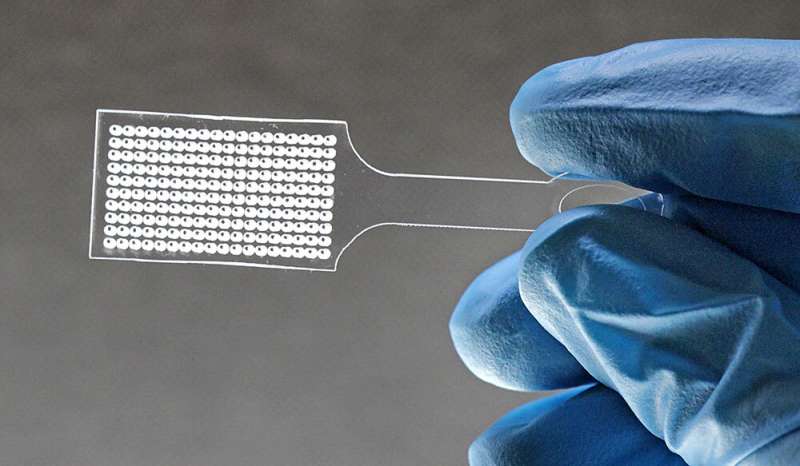Urinary tract infection self-test more accurate with digital bacterial culturing

Soon you will be able to perform a bacterial culture at home to test for urinary tract infection (UTI), with clinical-level results.
A "digital dipstick" developed by researchers at KTH Royal Institute of Technology in Sweden proved more accurate than currently available over-the-counter UTI tests, in a recently-published study.
A miniaturized and digitalised version of culture plates which are used in clinical laboratories, the digital dipstick detects infection with 89 percent sensitivity, the researchersreported in the journal Lab on a Chip.
One key difference with existing home tests is that the digital dipstick uses a digital bioassay to detect actual infectious bacteria, instead of the biomarkers which are associated with urinary tract infection, saysEmre Iseri, a researcher in micro- and nanosystems at KTH.
"The test strips you find at pharmacies do not give you clinically relevant results," Iseri says. "They measure biomarkers, such as nitride and leucocyte levels in urine, and make a conclusion based on these values.
"But various studies show that their sensitivity is too low to be relied on as a diagnostic tool."
Co-author Wouter van der Wijngaart says commercial test strips have a high detection limit, so clinically-relevant bacterial concentrations can go undetected.
"A patient urine sample could have bacterial concentration that is high enough to indicate infection, but with lower biomarker levels than the detection limit of the strip—resulting in a false-negative reading," van der Wijngaart says.
Iseri says that the digital dipstick may provide an advantage over not only home tests, but clinical tests as well. Because clinical tests require a two- to three-day wait for results, patients are often needlessly prescribed antibiotics in the interval. By contrast, the digital dipstick produces results in about 10 to 12 hours, thus avoiding unnecessary and unproductive treatment that could lead to further illness and, on a wider scale, antibiotic resistance.
More information: Emre Iseri et al. Digital dipstick: miniaturized bacteria detection and digital quantification for the point-of-care, Lab on a Chip (2020). DOI: 10.1039/D0LC00793E



















